Monday 31 January 2011
Sunday 30 January 2011
introduction to cameras
We had an introduction on how to use cameras, as we needed to know what to do before we started filming. This was a great way to teach us how to create our film in the best way possible.


We were shown how to do everything, how to work the camera and even simple things that turned out to be extremely important.
Some of the things we were taught were:
*How to turn the camera on
*How to insert the battery
*How to insert the memory card and how to store it
*How to set up the tripod and to adjust it to how it best suits you
*How to set up the camera onto the tripod so its safe and stable so it doesn't collapse
We were also spoken to about what not to do and what to do:


*Don't use zoom,use auto focus
*Never take the camera outside and leave it in the rain,use the right equipment to protect the cameras.
*Make sure the memory card is inserted the right way


We were shown how to do everything, how to work the camera and even simple things that turned out to be extremely important.
Some of the things we were taught were:
*How to turn the camera on
*How to insert the battery
*How to insert the memory card and how to store it
*How to set up the tripod and to adjust it to how it best suits you
*How to set up the camera onto the tripod so its safe and stable so it doesn't collapse
We were also spoken to about what not to do and what to do:


*Don't use zoom,use auto focus
*Never take the camera outside and leave it in the rain,use the right equipment to protect the cameras.
*Make sure the memory card is inserted the right way
Friday 28 January 2011
Thriller!
I’ve realised that although this blog is related to thriller, I haven’t really discussed what its really about!!
Thriller is a genre of literature, film, and television that uses suspense, tension, and excitement as the main elements!
Thrillers keep you on the edge of your seat, also they always keep you guessing!
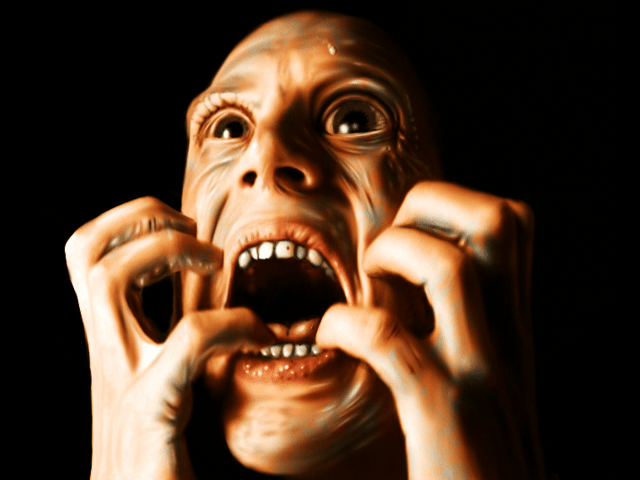
Typical Thriller Characters:
- Psycho
- Detective
- Assasin
- Victims
- Criminals
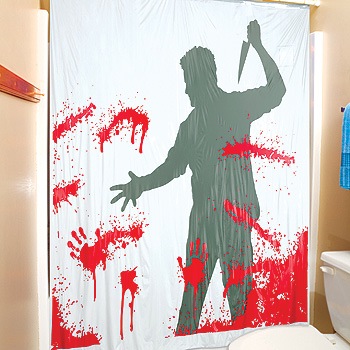

Typical Thriller Narratives:
- Death (pre-determined, murder, accidental, suicide)
- Red Herring
- Being Watched
- Being Followed
- Deception


Typical Thriller Themes:
- Entrapment
- Isolation
- Voyeurism
- Revenge
- Gain


Thursday 27 January 2011
Fonts....
During the lesson this week we also learnt about fonts. I will admit i never really paid much attention to font on films until today, i realised just how important fonts really are i mean you have to think what font should you use for the title sequence and also how to market the film. Also i have realised just how hard it is to choose a font, i mean film directors and companies spend a lot of time deciding which font to use for the title sequence and to market the film. A popular font used over and over again these days is Papyrus. Papyrus is a popular typeface designed by Chris Costello created in 1982.
When i think of Papyrus these are some of the things i associate with the font:
When i think of Papyrus these are some of the things i associate with the font:
- Egyptian
- Hieroglyphics
- Trees
- Natural
- Tree Bark
- Lo-tech
- Ancient
- Pirate writing
- Treasure map writing
- Tribal
- Old
- Chipped
- Tatty
Wednesday 26 January 2011
The Stepfather

In class we watched the film: The stepfather. It is what you can call a typical 'thriller film'
There weren't that many scenes which would make you completely shocked to see as you could kind of expect what was about to be shown to you.
However there were some scenes which attracted my attention and that were quite suspenseful.
At the very beginning we are faced with a suspenseful scene,we meet the main character in a strange but normal way. We are introduced to David (The Stepfather) in a bathroom, we see this shaving equipment which is a normal thing as men usually shave. As we begin to see more, we realise that he is actually changing his appearance which seems quite odd.
As the scene carries on,we follow David downstairs going to the kitchen to have some breakfast. Its just like a normal day, he turns on the radio playing a Christmas song and goes over to the kitchen to make some toast and to drink his coffee. At this point we realise something is definitely not right. The atmosphere then changes when we see the little boy dead,followed by his brother, sister and the mum.The sounds are intense and we get a knot sensation in our stomachs. This scene told us a lot about David in a way that we would know he wasn't a normal man as he seemed at first.
Another scene which brought some suspense was when David killed the old woman across the road after she had discussed with his wife about seeing someone on Americas most wanted that looked exactly like David.
We know he is going to kill her as he was not happy that she was telling his wife about this.

The old woman hears a knock at the door, at this point we know its David coming to kill her. As she goes to open the door, there was no one there. As this is a typical thriller film, we sense that he is already inside the house and will kill her when she gets in. Tension builds as she goes inside the house and hears noises. We are relieved when we find out its only one of her cats that is a bit aggravated. However, both her and us are faced with David's reflection in the mirror which makes us jump as we don't expect it. When she is approaching the staircase,as we expected he kills her by pushing her down the stairs.
Finally, a scene that made me jump was when the truth was out and David tries to kill his wife, Michael and his girlfriend.

David gives his wife sleeping pills, and when she awakens, she is shocked to meet the real David. He is shown to be confused as he doesn't know who he is in that house. She tries to run away locking herself in the bathroom as he runs after her. We are horrified when he kicks down the bathroom door and the mirror collapses before our eyes. He slowly approaches her with a knife and as he is about to stab her,she is brave enough and stabs him with a piece of glass in his neck before he gets the chance of killing her.She runs out of the bathroom and meets Michael. We are forced to jump as David is not dead and comes after them.
This thriller film was really good and should definitely be watched. A great film for the thriller fans.
Film Openings..
During today's lesson we learnt about the importance of film openings, to give us a better understanding on the importance of film openings we watched a documentary which lasted for about 30 minutes. So we benefited from watching the documentary we was given a list of questions to answer whilst we watched the documentary. By watching the documentary I learned just how important the opening sequence of a movie really is. Film directors spend a lot of time planning and filming the opening sequence of a movie because they want the movie to be the best that it can be.
Here are some of the questions we had to answer:
What does Thomas Sutcliffe mean when he says "Films need to seduce their audience into long term commitment. While there are many types of seduction, the temptation to go for instant arousal is almost irresistible."
Thomas Sutcliffe means that by the time the opening sequence is over, the audience have to be already gripped into watching the movie. He is also suggesting that in the opening sequence the characters, story, place and tone have to be established. Some of the things you can do to grab the audience's attention in the opening sequence is by starting with and action scene.
What is meant by a favourite trick of Film Noir? What is the trick?
Film Noir is a term used to describe stylish Hollywood movies. An example of Film Noir is gangsta or black and white movies. The trick of portraying a good Film Noir movie is by starting the movie with an ending. A good example of this is the movie Casino. By starting the movie with an ending it makes the audience want to watch more so they can find out what happened in between the scenes.
Here are some of the questions we had to answer:
What does Thomas Sutcliffe mean when he says "Films need to seduce their audience into long term commitment. While there are many types of seduction, the temptation to go for instant arousal is almost irresistible."
Thomas Sutcliffe means that by the time the opening sequence is over, the audience have to be already gripped into watching the movie. He is also suggesting that in the opening sequence the characters, story, place and tone have to be established. Some of the things you can do to grab the audience's attention in the opening sequence is by starting with and action scene.
What is meant by a favourite trick of Film Noir? What is the trick?
Film Noir is a term used to describe stylish Hollywood movies. An example of Film Noir is gangsta or black and white movies. The trick of portraying a good Film Noir movie is by starting the movie with an ending. A good example of this is the movie Casino. By starting the movie with an ending it makes the audience want to watch more so they can find out what happened in between the scenes.
Title Sequence Analysis
In lesson we watched the title sequence of stepfather and I learned just how much work going into making the titles and how everything that is shown and how the font looks has a reason to it. The title fist piece of writing we see in the opening is the production company of the film. We do not get any titles when we see the first bit of crucial objects so we can focus on this instead of the titles. We see the title ' The stepfather ' as soon as we see a man this helps to indicate that this man is our main guy. The titles then go on for about 5 minutes which shows just how much work goes into this film.
After this we got into groups and has to analyse a title sequence , we got the film 'Arlington Road' the opening sequence was roughly about 2 minutes and contained many titles. By watching this we knew it was a type of thriller and we see a man covered in blood in a hospital. We became confused to what is happening and the editing was fading in and out of images. Also the music went with the editing it was face past and scary.
The title sequence for arlington road was
After this we got into groups and has to analyse a title sequence , we got the film 'Arlington Road' the opening sequence was roughly about 2 minutes and contained many titles. By watching this we knew it was a type of thriller and we see a man covered in blood in a hospital. We became confused to what is happening and the editing was fading in and out of images. Also the music went with the editing it was face past and scary.
The title sequence for arlington road was
- 0.01- Polygram filmed entertainment presents
- 0.08 Association with lakeshore entertainment
- 0.11 A Gorai production
- 0.15 & Mark pellington film
- 0.20 Main characters
- 0.30 The title Arlington road
- 0.55 casting by Ellen Chenoweth
- 0.59 co producers Jean Higgins
- 1.03 Music by Angelo Badalalmenti
- 1.07 additional music by Tom and Andy
- 1.12 costume design by Jennifer Barret
- 1.16 production design Theresse Deprez
- 1.18 edited by Conrad Buff Ace
- 1.25 direction and photography Bobby
- 1.48 Directed by Mark Pellington
Thriller sub-genres
Thriller films are divided into sub-genres which all use suspense, excitement and mystery.
These elements are vital so that the audience stays interested in the film.
In class we also did a worksheet in groups and we had to figure out what characters and what settings would match the sub-genres. This was a great way to learn them as we done the activity.
Mystery thriller: This thriller involves a lot of suspense and questions -for example The Da Vinci Code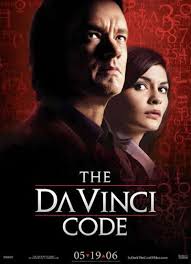
Crime thriller: This thriller involves the film to focus on the criminal and the crime rather than the policeman. It includes chases, murderers/ serial killers and robberies. This creates a lot of excitement-for example The Departed

Phycological thriller: This thriller tends to be intense as it is based on the characters mental and emotional state instead of the physical- for example The Uninvited

Action-adventure: This thriller involves a lot of fast paced scenes full of excitement-for example Salt
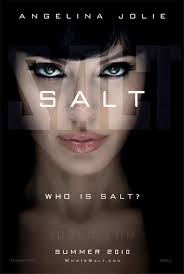
Disaster thriller: This thriller is all about natural disasters just like earthquakes, floods, volcanos etc -for example 2012
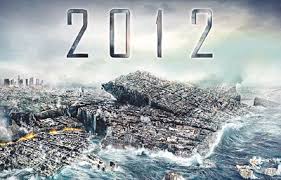
Horror thriller: This is the type of thriller which contains most suspense. A lot of scenes contain suspense.-for example The Eye
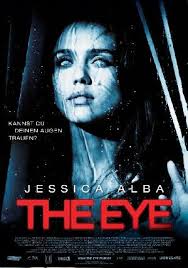
Political thriller: This thriller is all about politics and working with the government-for example State Of Play
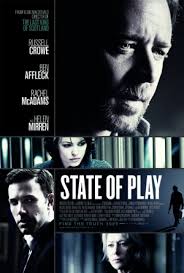
Paranormal/Supernatural: This thriller includes a lot of suspense and tension, the character often has a psychic power/ability.-for example Paranormal Activity
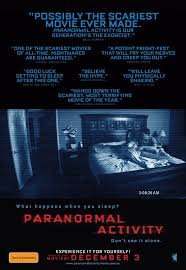
These elements are vital so that the audience stays interested in the film.
In class we also did a worksheet in groups and we had to figure out what characters and what settings would match the sub-genres. This was a great way to learn them as we done the activity.
Mystery thriller: This thriller involves a lot of suspense and questions -for example The Da Vinci Code
Crime thriller: This thriller involves the film to focus on the criminal and the crime rather than the policeman. It includes chases, murderers/ serial killers and robberies. This creates a lot of excitement-for example The Departed
Phycological thriller: This thriller tends to be intense as it is based on the characters mental and emotional state instead of the physical- for example The Uninvited
Action-adventure: This thriller involves a lot of fast paced scenes full of excitement-for example Salt
Disaster thriller: This thriller is all about natural disasters just like earthquakes, floods, volcanos etc -for example 2012
Horror thriller: This is the type of thriller which contains most suspense. A lot of scenes contain suspense.-for example The Eye
Political thriller: This thriller is all about politics and working with the government-for example State Of Play
Paranormal/Supernatural: This thriller includes a lot of suspense and tension, the character often has a psychic power/ability.-for example Paranormal Activity
Introduction to camera skills
Before we could use the cameras we had to go through a PowerPoint that told us how to handle the cameras with care. We made sure we listened and payed attention as we did not want to break them.
After the presentation we then got a demonstration of how to set the tripod up and physically see how to work the cameras.
Studying Film Openings
Today we learned about the importance of film openings, in order to do that we had to watch a 30 minute documentary.. I must say it was pretty dull and boring! But hey, i managed to get through it and it actually taught me quite a few things that I didn’t know before, it also gave me a better understanding on the importance of film opening.
In order for us to watch the documentary and not sleep through it, we got a set of question to answer on it.. This showed that we actually benefited from watching the documentary.
I learned that film directors spend a lot of their time planning and filming the opening sequence of a movie so that it could be at its best! Plus the whole film relies on the beginning! If the audience are pulled in, and get interested right from the beginning, then their most likely to stay till the end, they might even come back to watch it. :)
I wouldn’t want to bore you and go through all the questions, instead il talk you through some of them. :)
What is it meant by “a favourite trick of film noir” what is the trick?
An example of film noir is black and white and a gangster movie, film noir is basically a term used to describe stylish Hollywood movies. The trick is to start the movie of with the ending, this makes the audience very interested and it makes them question their selves about why and what happened.
What does critic Stanley Kauffmann describe as a classic opening?
Well a classic opening would be establishing the location and what is in it.
What does Thomas Sutcliffe mean when he says "Films need to seduce their audience into long term commitment. While there are many types of seduction, the temptation to go for instant arousal is almost irresistible."
Well this basically means that by the end of the opening scene, the audience should really be into the film and should be anxious to watch it. A really good way to grab the audience’s attention in the opening sequence would be to start off with an action scene. Thomas Sutcliff suggests that in the opening sequence the character, place, storyline and tone should be established.
Tuesday 25 January 2011
Livetype and Sound: Skills
After we had edited our film we had to add sound to our film, to make it more interesting. To help with the sound we used a programme called 'Soundtrack Pro' which is only used on Apple Macs. We decided to work as a group to add the sound, this way each person got to contribute to the sound, and had a say in what should be added. I would say using 'Soundtrack Pro' was really easy and i really enjoyed doing the sound, better then i did doing editing. I think the 'Soundtrack Pro' programme is really as they give you a range of different sounds to choose from and they have any sound you are looking for whether it is footsteps or a child screaming. 'Soundtrack Pro' has it. When choosing what sound to use for our film, we tried to get the most accurate sound we possible could to make our film more realistic. I would say after using 'Soundtrack Pro' it really got me thinking about the kind of sounds i would like to use for my film and how i would be able to use the sound to make the film convincing and interesting.It also got me thinking that maybe i would like to do the sound for my film, as i really enjoyed adding sound to our practise film.
After completing the sound for our film, we was then shown a short power point about 'Livetype.' We was shown this power point as an introduction into world of 'Livetype.' 'Livetype' is a programme on Apple Macs which allows people to add subtitles to their films. You also use 'Livetype' when you are in process of making your title sequence. As we spent most of the lesson working on the editing and soundtrack of our film we didn't have time to test how to use 'Livetype' in our film, but hopeful in the next few weeks we will be able to add a title sequence to our short film.
After completing the sound for our film, we was then shown a short power point about 'Livetype.' We was shown this power point as an introduction into world of 'Livetype.' 'Livetype' is a programme on Apple Macs which allows people to add subtitles to their films. You also use 'Livetype' when you are in process of making your title sequence. As we spent most of the lesson working on the editing and soundtrack of our film we didn't have time to test how to use 'Livetype' in our film, but hopeful in the next few weeks we will be able to add a title sequence to our short film.
Introduction to editing: Skills
The editing process plays an important role in movie making, so to help us get a better understanding of how editing works. Each group was set a task to edit the movie that they made, this was so that we could get a sense of what editing is all about. When we began the editing process we used a program called 'Final Cut Pro.' At the beginning of the editing process, i found using 'Final Cut Pro' quite diffiuclt as i kept getting confused about how to cut a scene. But with some practise i began to realise that using 'Final Cut Pro' is pretty easy to use, as long as you know what you are doing. To make our film the best it could be we tried to get a range of different shots like close ups, extreme close ups and long shots, this was so we had a good choice of shots to choose from when we came to edit the film. Overrall i would say the editing process of our film was very good, as we tried to combine everything that we had learned into such a short film.
Denotation and Connotation..
Yesterday in class we learn't about Denotation and Connotation. This is what I interpreted from this lesson;-
Denotation- What an image actually shows and what is immediately shown, as opposed to the assumptions that an individual reader may interpret from it. Denotation can also be the first step to the identification and definition of certain elements of an object or text. e.g. red roses.
Connotation- Is the meaning of a sign that is arrived through the cultural experience a reader brings to it. In other words connotation is the meaning behind the picture or text. E.g. when i look at a bouquet of red roses, i think of love and happiness. Whereas other people might think that a bouquet of roses signifies the emotion of courage, or that red roses are given to show respect or to say "congratulations."
Denotation- What an image actually shows and what is immediately shown, as opposed to the assumptions that an individual reader may interpret from it. Denotation can also be the first step to the identification and definition of certain elements of an object or text. e.g. red roses.
Connotation- Is the meaning of a sign that is arrived through the cultural experience a reader brings to it. In other words connotation is the meaning behind the picture or text. E.g. when i look at a bouquet of red roses, i think of love and happiness. Whereas other people might think that a bouquet of roses signifies the emotion of courage, or that red roses are given to show respect or to say "congratulations."
The Structure of Thriller Openings...
When you analyse film openings you will notice that there are 3 basic structures that are followed, these structures include:-
-A narrative opening with the titles running throughout e.g.
- A discrete title sequence e.g.
-Titles over a blank screen, followed by the narrative opening e.g.
- A narrative opening with highly stylized editing, distinct from the rest of the film e.g.
-A narrative opening with the titles running throughout e.g.
- The Stepfather
- The Shining
- DeJa Vu
- A discrete title sequence e.g.
- Seven
- Arlington Road
- James Bond movies
-Titles over a blank screen, followed by the narrative opening e.g.
- Donnie Darko
- Dead Calm
- A narrative opening with highly stylized editing, distinct from the rest of the film e.g.
- The taking of Pelham 123
- Mazerine
Types of Thrillers...
Generic codes and conventions | Political/ conspiracy Thriller | Supernatural Thriller | Crime Thriller |
Characters | · Politician · Businessmen · Terrorists · Spy’s | · Vampires · Ghosts · Witches · Spy’s | · Police · Hit men · Gangsters · Spy’s |
Settings | · Office · City · Big houses · Hotel | · Forest · Haunted houses · Graveyard · Basement/ cellar · Castles/ dungeon · Suburban town | · Police station · Estates · Clubs · Casino |
Analysing Thriller Clips- Genre
Analysing Thriller Clips for GENRE
MOMENTO-
What’s the sub-genre?
· Psychological thriller
Use of camera (movement, angle, distance)
· High angles used
· Tilt angle used
Sound (musical score, sound effects, dialogue)
· Slow, thoughtful music
· Stringed instrument in the background
· Bullet dropping on the floor
Editing (pace)
· Slow paced editing
· Technique- rewinding of the scenes
What Lies Beneath-
What’s the sub- genre?
· Supernatural thriller
Use of camera (movement, angle, distance)
· Zoomed in shot, of the lady under water.
· Low angles also used.
Sound (musical score, sound effects, dialogue)
· Non- Diegetic sounds.
· Echo sounds.
· Base drone.
· Long notes.
Mise en scene (setting, location, lighting, props)
Props used include;-
· Bath
· Hair dryer, which makes a strange noise, creating mystery.
My Analysis Of The Opening Of 'Seven'
We watched a lot of different types of thriller opening sequence, but the one that really caught my eye was “SEVEN”
The reason why Seven really caught my attention, because to me it was unique, haven’t seen any other like it.. Literally the whole of the opening sequence were either close ups or extreme close ups! Having everything so close.. Practically up in your face.. Was strange.. It gave a different prospective of life.. Thought it was unusual but a very clever way of starting the film, and engaging the audience! The disadvantage of having everything so close is that you don’t know what’s happening around you, which makes you uneasy and quite anxious.. i think that the thrilling part of the film!
I also thought the soundtrack really went well with how it started ff. The sound was upbeat and harsh!


Some of the close ups were pretty disturbing, even though it wasn’t pleasant to look at, somehow i still wanted to watch it.. Something about the film didn’t make me turn around! That’s what i most loved about it :D
The titles used in this film, look as if they are written by hand, that’s what makes the film so real.. And brings it to life.. I like the way when the titles appear.. They appear on a black background.. Most of you would think that its pretty dull and boring.. And yeah usually I would agree.. But the black background actually works with this opening sequence and it fits right in!

Livetype && Sound!
I found it quite amusing, as some of the sounds were pretty weird.. But in order to find the right sound tracks for our film we went through most of them and experimented with them.
After playing around with the sounds, we decided in the end, that we were not going to add music, just sound effects!
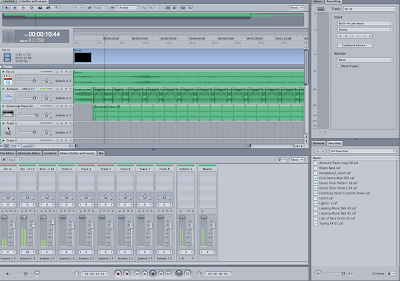
The sound effects we added were:
· Door closing
· Footsteps
· Heavy breathing
· Phone ring
· Busy traffic
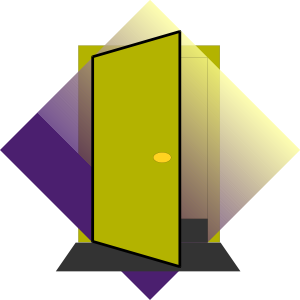



After we added the sound effects, we re-played our film; and I though it sounded pretty realistic also that it fitted in with our film well. :D
Using 'Soundtrack Pro' I learnt how to insert music and sound effects. You literally have a whole variety of sounds to explore from!
Using 'Soundtrack Pro' I learnt how to insert music and sound effects. You literally have a whole variety of sounds to explore from!
So all of you guys that want to add music/sound effects to your film, then I recommend you use LIVETYPE!! Its self explanatory, simple and easy to use! Most of all you can play around with it, and you never know, you just might enjoy it! ;)


Title Sequence Analysis- Arlington Road
Title sequence Analysis: - Arlington Road
State the production & Distribution companies. How are they introduced? What purpose do they serve at the start of the movie?
Production Company- Screen Gems In association with Lakeshore Entertainment. Gorai Samuel's productions. The production and distribution companies are introduced after you see the first scene in the movie. They are introduced to tell people who produced the movie but also to tell what production company they used to produce the movie.
List the information that is included in the title sequence...
· A Mark Pellington film.
· Actor’s;- Jeff Bridges, Tim Robbins, Joan Cusack, Hope Davis, Robert Gossett, Mason Gamble, Spencer Treat Clark, Stanley Anderson.
· Casting by; - Ellen Chenoweth, Kathleen Chopin & Tracy Kaplan.
· Co-producers; - Jean Higgins & Richard S.Wright.
· Music by Angelo Badalamenti- Additional music by Tom and Dandy.
· Costume Designer- Jennifer Barrett- Pellington- Production Designer Therese- Pellington.
· Edited by Conrad Buff A.C.E.
· Director of Photography- Bobby Bukowski.
· Co-executive Producer Judd Malkin, E.D Ross.
· Executive producer- Tom Rosenberg, Sigurion Sighvatsson, Ted Tannebaum.
· Produced by Peter Samuelson, Tom Gorai, and Marc Samuelson.
· Written By- Ehren Kruger.
· Directed by- Mark Pellington.
Film Title- where exactly is this placed? Start, Middle, end?
· Arlington Road.
· Film title is placed in the middle of the title sequence.
Key Points of the Film....
· Dark setting
· Mystery
· Negative color
· Dark and dreary music
· Typical street house
Title Seqeunce for Arlington Road
0.01 – Polygram filmed entertainment presents
0.08 – Association with lakeshore entertainment
Title Seqeunce for Arlington Road
0.01 – Polygram filmed entertainment presents
0.08 – Association with lakeshore entertainment
0.11 – A Gorai/Samuelson production
0 0.15 - & Mark Pellington Film
0.20 – Main Characters – Jeff Bridges & Tim Robbins
0.30 – Title – Arlington Road
m More Characters: Joan Cusack, Hope Davis, Robert Gossett, Mason Gamble, Spencer Treat Clark & Stanley Anderson.
m More Characters: Joan Cusack, Hope Davis, Robert Gossett, Mason Gamble, Spencer Treat Clark & Stanley Anderson.
0.55 – casting by Ellen Chenoweth & kathleenchopin tracy Kaplan
0.59 – co producers, jean Higgins, Richard S.Wright
1.03 – music by Angelo Badalamenti
1 1.07 – additional music by tom and Andy
1.12 – costume designer Jennifer Barrett
1 1.16 – production designer Therese Deprez
1.18 – edited by Conrad Buff A.C.E
1.25 – direction and photography Bobby Bukowski
1.35 – Produced by Peter Samuelson Tom Gorai Marc Samuelson
1.48 – Directed by Mark Pellington41 – Written by Ehren Kruger
dc
d
·
Subscribe to:
Posts (Atom)







